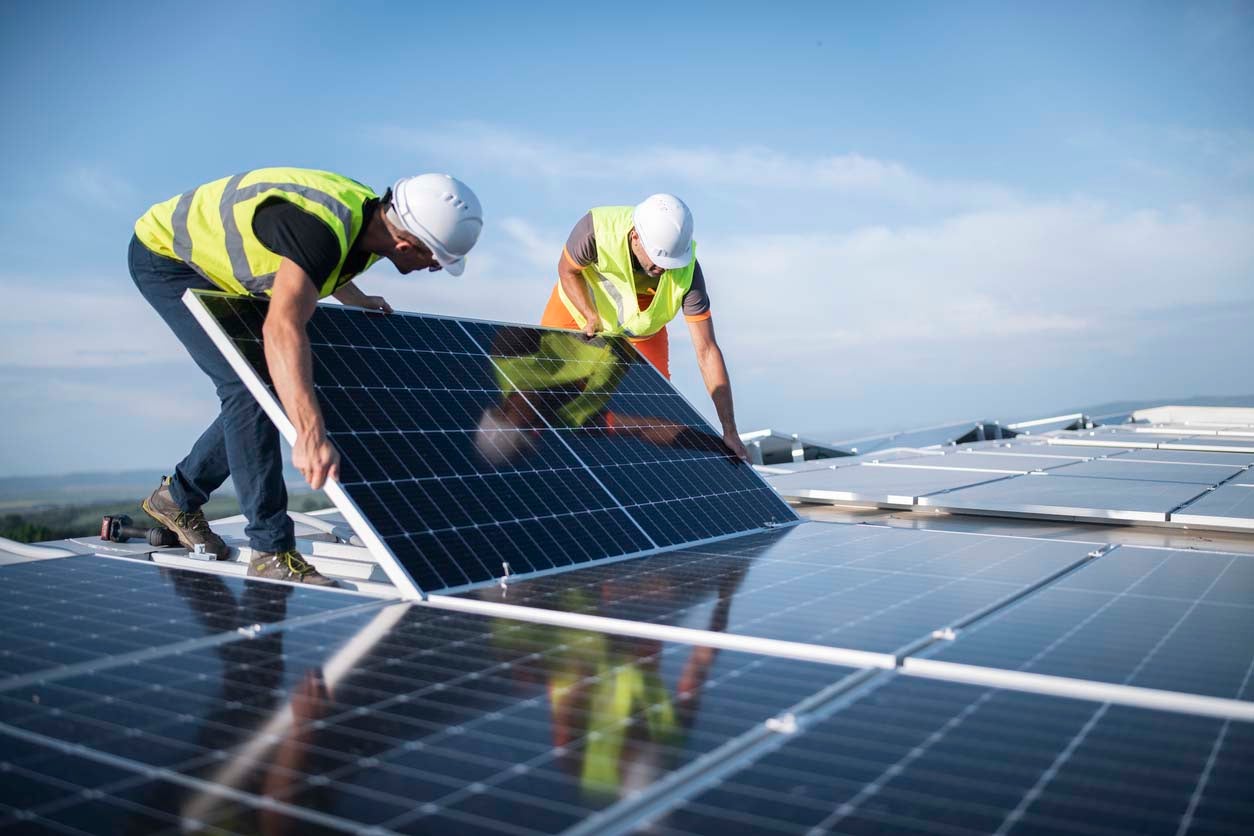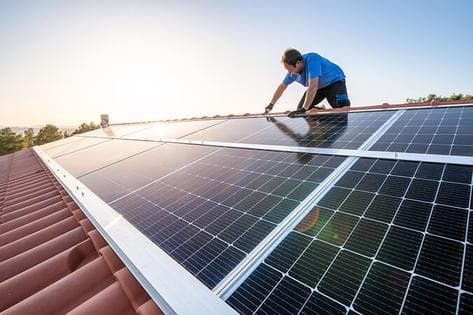The Main Principles Of Solar Panel Installation Pennsylvania
The Main Principles Of Solar Panel Installation Pennsylvania
Blog Article
Residential Solar Panels PA: Our Company Concentrates On The Installation And Management Of Photovoltaic Energy Systems
History and Development of Solar Panel Business
The beginning of solar panel companies can be traced back to the 1800s when Alexandre Edmond Becquerel discovered the photovoltaic result. Would he have envisioned how his discovery would revolutionize the method we harness energy?
Early Beginnings

In 1954, Bell Labs developed the very first practical solar battery. This marked a significant milestone in the history of solar power. They were initially used to power area satellites, but who knew this was just the start?
Advancement and Growth
- In the 1970s, an energy crisis resulted in increased interest in renewable energy sources, including solar power.
- By the 1990s, improvements in technology and increasing ecological awareness resulted in the development of photovoltaic panel companies internationally.
A New Age
As we got in the 21st century, the solar industry saw a rapid development. The demand for clean and renewable energy produced a new period in the photovoltaic panel industry.
Fascinating Truths
- The world's first solar energy station was built in 1982 in Hisperia, California.
- By 2019, solar power had become the world's fastest-growing source of power.
Indeed, the journey of photovoltaic panel companies has been amazing, hasn't it? The future holds enormous capacity, with continuous advancements leading the way for a sustainable future. Can we envision a world powered completely by solar power?
Moving on
Today, photovoltaic panel business continue to innovate, striving for more efficient and affordable options. The development of solar power has come a long way, and yet, the journey has actually simply begun.
The Core of Solar Panel Production
Ever wonder what enters into producing those shiny, sun-loving photovoltaic panels? The process is as impressive as the end product (Residential Solar Panels PA). High-purity silicon, the primary ingredient in solar panels, undergoes different changes to ensure its efficiency and toughness
From Sand to Silicon
Crystalline silicon, the backbone of most solar panels, stems from easy sand. It's a fascinating journey, isn't it? The sand undergoes a high-temperature reaction with carbon to form silicon. This isn't simply any silicon. The silicon used in solar panels is "solar-grade," with a pureness of 99.9999%. It's this purity that enables the panels to efficiently convert sunlight into power.
Ingot Formation
When the silicon is pure enough, it's time to form ingots. Picture a large, cylindrical block of strong silicon. How is this achieved? Through a procedure called Czochralski process, where the silicon is melted and after that slowly recrystallized. It's a sluggish dance of science, resulting in a solid item that is practically as pure as the raw silicon itself.
Slicing into Wafers
The ingots are then sliced into wafer-thin pieces, like slicing a loaf of bread. Each piece is a prospective solar cell, waiting to harness the power of the sun. Did you know that the silicon wafers are only about 200 micrometers thick? That's about half the density of a human hair! The procedure needs precision and perseverance, however the outcome is a set of wafers all set to be turned into solar cells.
Creating Solar Battery
With the wafer all set, it's time for the magic to happen. The silicon wafer is 'doped' with other elements like phosphorous and boron to create an internal electric field. It's this field that makes it possible for the conversion of sunlight into electrical power. Complex, isn't it?
Assembly and Quality Assurance
Solar battery resemble puzzle pieces that come together to form a solar panel. The cells are soldered together in a grid-like pattern, then covered with a protective layer of glass. The final action includes rigorous quality control checks. After all, it's necessary that every solar panel carries out at its peak, wouldn't you concur?
Expert Suggestion
Constantly remember that even the most efficiently manufactured photovoltaic panel can lose effectiveness due to dirt and debris accumulation. Routine cleansing can considerably enhance your panels' performance.
Understanding the Ecological Impact of Solar Panel Business
Ever pondered the ecological footprint of a photovoltaic panel company? Green innovation, such as solar, has transformed our energy landscape, but what about the behind-the-scenes impact?
The Production Process: A Double-Edged Sword
The production procedure for photovoltaic panels demands a considerable quantity of energy. This procedure, known as 'em bodied energy', can be deemed a kind of 'energy financial obligation'. It's a little like obtaining today's sunshine to power tomorrow's energy requirements. However stress not, the energy repayment time is frequently much shorter than you 'd think!
- The energy repayment duration for photovoltaic panels is normally 1-4 years.
- After this duration, the energy produced is basically carbon-free.

Life After Decommission
And what occurs when a solar panel read more reaches completion of its lifespan? Can it just be tossed into the trash? No, that wouldn't be extremely green, now, would it?
A practical solution is recycling. While photovoltaic panel recycling is still in its infancy, it holds a world of potential. Recycling not only keeps materials out of landfills but also reduces the need for new basic materials.
Accountable Sourcing: More Than A Buzzword
Where does the silicon come from, you ask? Unfortunately, the industry's demand for silicon and unusual minerals can cause harmful mining practices. Accountable sourcing is therefore important to reduce damaging environmental effects.
Minimized Carbon Emissions: The Larger Picture
Let's not forget the larger photo: solar energy significantly minimizes carbon emissions. When installed, solar panels generate clean, renewable resource, balancing out their preliminary production footprint.
In brief, the environmental effect of solar panel business is a complex issue. With responsible practices, the promise of a cleaner, greener future is well within our grasp.
Financial Performance and Market Share of Solar Panel Companies
Ever wondered why some photovoltaic panel business - Commercial Solar Panels PA outshine others in the market? What sets them apart? The crucial depend on their financial performance and market share
Financial Efficiency: A Vital Indication
Financial efficiency plays an essential function in the success of any company. For photovoltaic panel business, it's no different. Strong monetary performance makes it possible for these companies to invest in advanced innovation, research study, and advancement, thereby developing high-quality, effective photovoltaic panels.
How do they accomplish this? With a focus on expense efficiency and tactical financial investments. Business that handle to lower production costs without compromising on quality tend to fare much better in the market.
Market Share: A Step of Success
Market share, on the other hand, is a direct reflection of a business's popularity among consumers. A high market share indicates more homeowners are selecting their photovoltaic panels over rivals.
So, what's the secret dish for gaining a bigger market share? It comes down to consumer satisfaction and brand reputation. Business that focus on customer requirements and keep a positive brand image are most likely to catch a bigger share of the market.
- Client Satisfaction: Photovoltaic panel business that deliver dependable products and remarkable customer support tend to have higher customer complete satisfaction rates.
- Brand name Credibility: A strong brand name track record is built over time through constant shipment of quality services and products.
Financial Performance and Market Share: The Symbiotic Relationship
Interestingly, the relationship in between monetary efficiency and market share is not one-sided. They feed off each other. A strong financial performance can increase a business's market share, while a high market share can enhance financial performance.
As a solar panel company, stabilizing these 2 elements is essential for long-lasting success. A company that ignores either of them might discover it challenging to keep its position in the competitive solar market.
The Takeaway
So, what does all this mean for you? Whether you're a homeowner aiming to set up solar panels or an investor eyeing the solar market, understanding the monetary performance and market share of photovoltaic panel business is vital. They are essential indications of a company's health and potential for future development.
Report this page